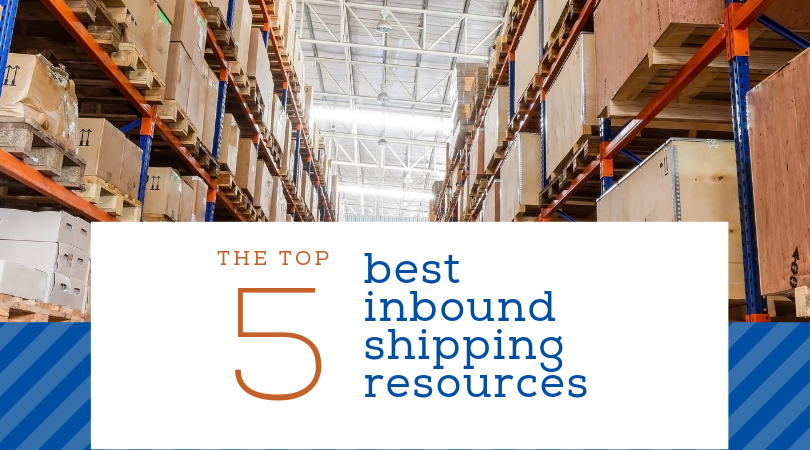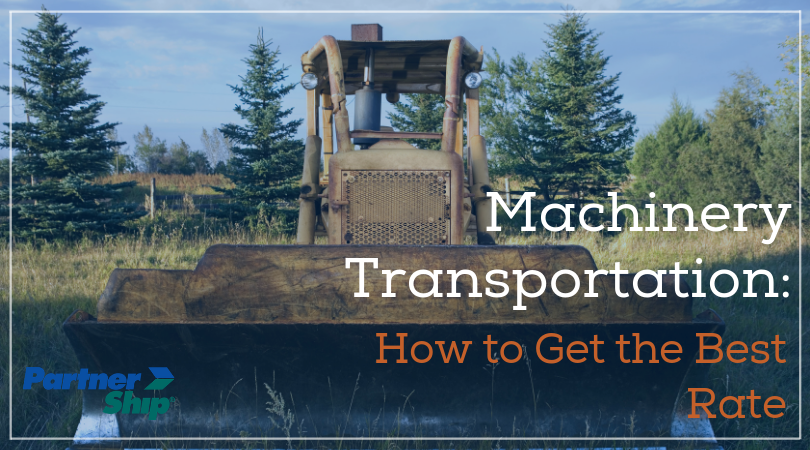August 22, 2019 at 12:03 PM
—
Leah Palnik

When you think about how to optimize your shipping operations, the freight you receive from vendors might not be the first thing that comes to mind. However, you have more control over your inbound shipping than you may realize, and when you have the right resources it can actually be easy to master. We’ve rounded up some of our top resources that will help you manage your inbound shipments.
- Understand the difference between “prepaid” and “collect”. Inbound management 101 starts with looking at how you’re paying for your freight. A common misconception is thinking that you’re not paying for your inbound shipping when you’re not paying for it. This video will help you gain a good understanding of prepaid and collect, and how you can make a switch that will help you save in the long run.
- Learn how to properly accept freight and handle claims. You probably already know that sometimes the freight you receive can arrive damaged. It’s obviously never ideal, but that doesn’t mean it has to be a total disaster. Having the proper procedures in place with your warehouse staff is the key to getting claims approved and paid out when the unthinkable happens. Find out the best steps to take with this helpful white paper.
- Learn how to create and use routing instructions. Creating routing instructions for your vendors is a great way to ensure your inbound freight gets shipped at the best price and in the most efficient way for your business operations. Getting started is the hardest part, but we have you covered. With this blog post we show you some examples, explain how to create your routings, and give guidance on how to communicate them to your vendors.
- Achieve vendor compliance. You’ve perfected your routing instructions and you know exactly how to cut your costs. The only thing that’s missing? Getting your vendors to follow your lead. This blog post gives you a few pro tips to get those relationships on track.
- Follow the 4 steps to gain control of your inbound shipping. When you’re ready to take a full look at your inbound shipping operations, you’ll want to check out this all-encompassing white paper. It’ll guide you through the four important steps you’ll need to take to cut your costs and help everything run smoothly. Find out exactly what you need to do and get tips for executing them.
Figuring out how to effectively manage your inbound shipping doesn’t have to be intimidating. These resources can point you in the right direction, but you don’t have to do everything by yourself. PartnerShip is here to help you implement these important strategies and save you time in the process. We can set you up with discounted pricing, create your routing instructions, and help ensure vendor compliance. Contact us to learn more.

August 8, 2019 at 10:30 AM
—
Jen Deming

Machinery transportation is a tricky endeavor that often presents shippers with a unique set of challenges outside of what is “normal” for a standard freight haul. Because larger, heavy machinery may need specific requirements in order to ensure safe transit, it’s important for shippers to be able to determine the proper equipment for the task. Being able to sort out which equipment type works best for your load can also keep costs where they need to be, so that you’re not overspending on a specialized
piece of equipment you don’t really need.
Why trucking equipment matters for your machinery transportation
The variety of heavy hauling equipment used in machinery transportation can vary greatly depending on size, maximum weight capacity, structural components, and materials. Certain types of heavy haul equipment work exclusively with pickup and delivery locations that have docks. Others are built to be flexible in order to fit a variety of different loading and unloading needs for places with limited options like construction sites. It’s important for shippers to keep in mind that the more specialized the piece of equipment, the more time needs to be built into quoting and finding an available truck. It’s also likely that the haul may be more costly. Determining certain factors about the machinery you are planning to ship can help you choose which piece of specialized equipment may make sense the most sense for your load.
Types of equipment to consider for your machinery transportation:
- Best for the budget-minded but flexible: Flatbeds/extendable flatbeds
Flatbeds are some of the most common types of trailers used in truckload shipping and are extremely versatile for a wide variety of haul types, especially for machinery transport. They have a maximum weight limit of 48,000 lbs. Dimensionally, the maximum width and height for legal operation is 8.5 feet. A shipment can be wider, or stacked higher, but over dimensional rules and restrictions will apply. A major drawback to the standard flatbed is that it is typically raised 60 inches off the ground. This means that either a forklift or a crane will need to be used to load and unload freight. So, if your equipment can be broken down and disassembled for transport, this is your least expensive and most readily-available option.
It’s important to keep in mind that flatbeds are open air trailers. This means your load will be exposed to the elements. Depending on the type of machinery you are moving, tarps and straps may be needed for protection. Most flatbed drivers do have these items available, but it’s critical to note that at the time of your request.
Another type of flatbed option is an extendable deck. This type of equipment is essentially a flatbed trailer that can be expanded to carry longer shipments. The most common size is a 48 foot flatbed that is expandable to 60 feet. If you are shipping a piece of machinery that is extra-long or in multiple pieces, this would be a great option for your load.
- Best for extra tall loads: Step deck
A step deck trailer is very similar to a standard flatbed, but the addition of a tiered upper and lower deck creates two levels in order to accommodate for taller cargo. The shorter upper deck is typically 11 feet in length and can fit 8.5 feet in height. The longer lower deck is 37 feet in length and can accommodate up to 10 feet in height. It’s important to note width requirements are the same as a standard flatbed. If you are shipping a piece of equipment over 9 feet in height, it would make sense to look at a step deck trailer option. These types of trailers often have ramps for unloading, and may be safer for forklift pickup since they are closer to the ground.
- Best for loads that need security and versatility: Conestoga
This trailer option combines the security benefits of a standard three-sided dry van trailer with the versatility of a flatbed trailer’s loading and unloading options. Drivers can side load with cranes or forklifts the same way they would with a flatbed, but don’t need to struggle with tarps and straps for protection from the weather and elements during transit. Another added benefit to the Conestoga retractable tarp system is individual access to any part of a load during transit, making multiple drops easier should your shipment need delivery at multiple locations. These trailers also come in a step deck version which are useful for especially tall pieces of equipment. Conestoga trailers aren’t necessarily a standard part of every fleet, so they can be difficult to find and the price may reflect that depending on spot rate trends.
- Best for extra tall, over dimensional loads: Lowboy/Double drop trailer
As one of the most common trailer types for construction equipment loads, lowboy trailers are especially suited for machinery transport. They can haul from 40,000 to 80,000 lbs. depending on the amount of axles on the trailer. These trailers have a maximum 12 foot freight height and overall load height of 14 feet, making them particularly useful for very large equipment. If the load is over dimensional, it’s important to note that they may require additional permits depending on sizes of the load and state regulations within the transit.
- Best for very large, drive-on equipment: RGN (Removable Gooseneck Trailer)
A removable gooseneck trailer is the most convenient option for machinery transportation, especially for the large pieces of equipment such as cranes, excavators, or other large pieces of construction equipment. The front of the trailer detaches, allowing it to be lowered to ground level to create a ramp. This means loads can be driven onto the trailer, either by operating the machinery itself or via forklifts moving smaller pieces of equipment. Maximum freight weight is 42,000 lbs. but can be up to 80,000 lbs. depending on the number of additional axles. Maximum freight height is 11.6 feet and width is the standard 8.5 feet, but there are “stretch” options too for longer loads. If either the pickup or delivery location need to drive equipment on, this is the option for you. But, because this is the ultimate specialized piece of equipment that offers the greatest flexibility, it’s most likely to be the least cost-effective option.
Machinery transportation can be a complicated process, so it’s very important for shippers to be informed in order to get the best rate. Variables such as height, width, and length of your load all impact what trailer type you need. Available options to the loading and unloading team, such as loading dock height and forklift assistance, all impact whether you need a simple flatbed, or a more sophisticated piece of equipment such as an RGN. If you have a truckload shipment and need assistance to find a reliable carrier with a specialty trailer, contact PartnerShip or get a free quote!
